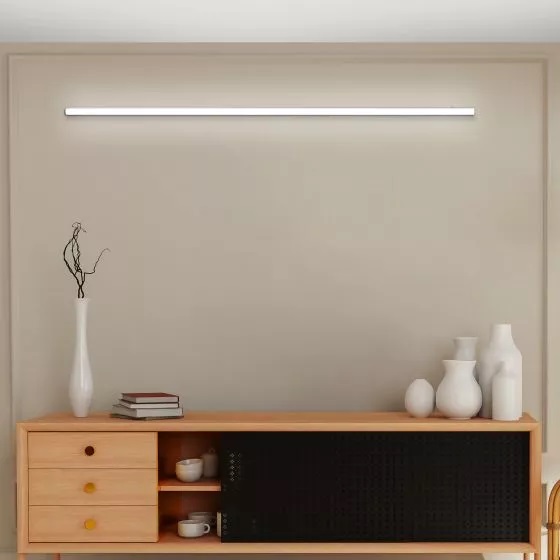LED Tube Lights: Everything You Need To Know

Offices, warehouses, and workshops have utilized tube lights for a long time because they provide adequate illumination. Depending on the installed fixture, it may be utilized with either a flat ceiling or a drop ceiling, one of its best features.
They also emit a great deal of light and have a broad beam angle, making them one of the most common ways to illuminate a room. They are also inexpensive to install and maintain, which is a benefit.
LED light bulbs versus fluorescent light bulbs
Fluorescent tube lights, which produce light via a low-pressure mercury-vapour gas discharge when an electric current flows through them, were formerly the norm. It was once widely used since it contained mercury, but it is now considered obsolete, useless, and potentially damaging to the environment. Ballasts, which regulate the flow of energy to the lights, must be maintained more frequently as fixtures age. Fluorescent lights that flicker on and off all the time have also been linked to eye strain.a
Due to the aforementioned factors, LED tube lights for homes are now the de facto norm for both new construction and the replacement of older lighting fixtures. Not only can LEDs in tube lights eliminate these concerns, but they also provide additional advantages. When LEDs are utilized in tube lights, they produce significantly superior light, resulting in less eye strain and enhanced visibility. They have higher CRI scores, last longer, use less energy, and don’t have any harmful chemicals in them.
Different Tubes
People who have never purchased LED lights before may find it difficult to pick among the four types of LED tubes currently available on the market. The primary distinctions between these tubes are whether they are single-ended or double-ended and whether or not they contain ballast. Direct wire, electronic ballast compatible, hybrid, and universal ballast compatible are the four primary classifications.
Utilizing straight wires, conduits are constructed
Direct-wire tubes are convenient because they operate without ballast and on standard household current. You will not have to replace the ballast if it breaks or wears out, which can save you a significant amount of money during the fixture’s lifetime. In large spaces like warehouses and office buildings with more than one floor, the savings from each fixture can add up to be quite large.
Consider that direct wiring fittings may necessitate additional materials for a complete refurbishment. Tube light bulbs require “tombstone” sockets to be powered and held. The two most prevalent varieties of tombstones used in the lighting industry are those with and without shutters. Direct-wire fixtures require rapid-start tombstones that are not switched for operation.
Compatible with Electrical Ballast Tubes
New to the tube lighting industry are “Type-A” or “Plug-and-Play” tubes that function with electronic ballasts. As the name suggests, these bulbs are intended for use with electronic ballast-equipped tube fixtures. Therefore, these bulbs cannot be used with magnetic ballasts or without a ballast.
Because the most recent generation of fluorescent light fixtures exclusively employs electronic ballasts, these tubes are quickly becoming one of the most widely offered types that are compatible with modern lighting. As more conventional lights are replaced with LEDs, their height will likely increase.
LED downlights for homes are exactly as simple to install as conventional fluorescent tubes. Due to the wide variety of electronic ballasts in the market, LED tube manufacturers conducted extensive testing to ensure that their products are compatible with any type of ballast. This makes installation easier for consumers and eliminates any worries they may have had.
Based on Wattage
Customers unfamiliar with LEDs may have difficulty determining the wattage required for a particular application. This is because, compared to older lighting technologies such as fluorescent, LED lights consume a fraction of the energy to generate the same quantity of light (in lumens). What determines the optimal wattage for an LED light is the lumen output required. Once the required lumens are determined, the appropriate LED bulb can be selected.
Conclusion
Some installations, such as when direct wire tubes are installed, require rewiring. Therefore, you should find an electrician with experience retrofitting LEDs. This will additionally ensure that the lights are placed securely and without compromising their quality. The quickest method for locating an electrician is to consult a directory. You may be able to filter the list by state or province, depending on your location.











